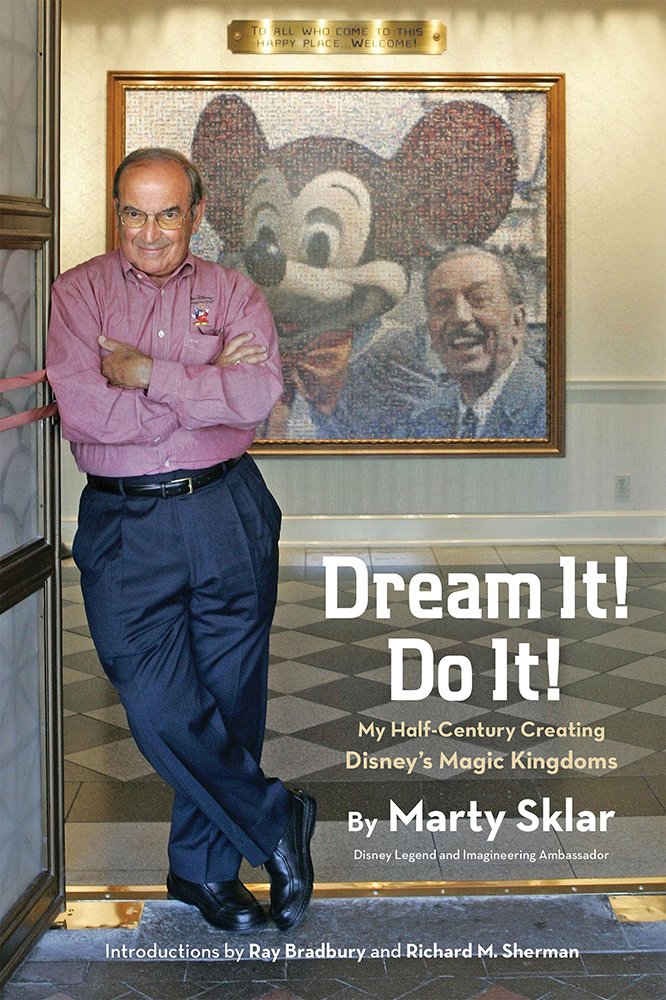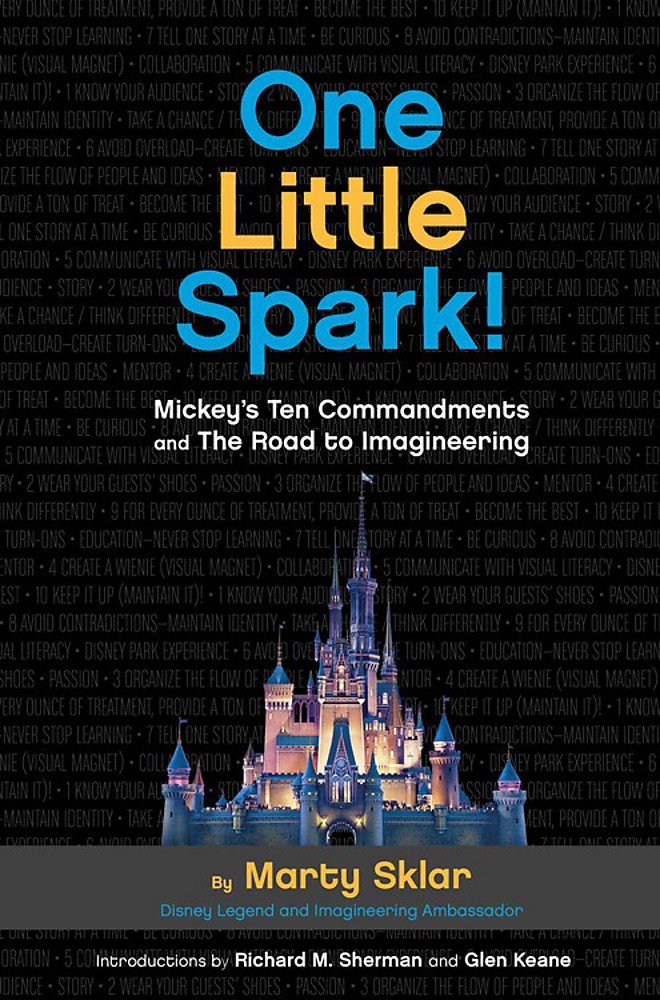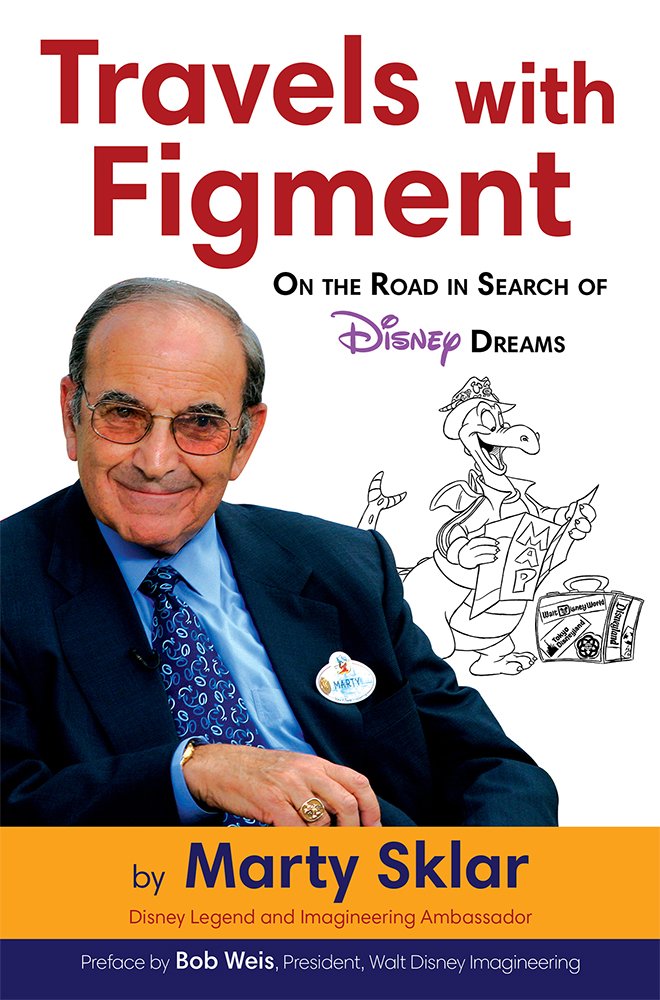Marty Sklar is Born
Perhaps THE most important person in EPCOT history, Marty Sklar started working for Walt Disney Productions in 1955 to write the “Disneyland News” paper just shortly before the park opened. Just a year later he began to oversee all of Disneyland's Marketing and publicity materials before joining WED Enterprises in 1961. There, Marty helped design the Enchanted Tiki Room and was a driving force in developing all four (WED-created) 1964 New York World Fair pavilions. More significantly, Marty became Walt Disney’s sole scriptwriter, for all his filmed appearances including every Intro to The Wonderful World of Color and wrote the entire script for, what is now colloquially known as “The Epcot Film”.
In 1974 Marty Sklar became the Vice-President of WED Enterprises and was one of the most important creative forces involved with transforming Walt’s concept of a utopian city into a world-shaping Center.
Marty with Herb Ryman circa 1980
Marty Sklar, John DeCuir Sr, and John Hench with the 1977 “Golden Dome” iteration of Spaceship Earth.
In addition to his impressive body of work overseeing the creation of every major project for Walt Disney Imagineering from Walt Disney World’s Magic Kingdom to Hong Kong Disneyland, Marty’s philosophies on design and leadership have become legendary with his multiple volumes of “Mickey’s Ten Commandments” which are ESSENTIAL to the development and maintenance of all theme parks.
Mickey’s Ten Commandments
by Marty Sklar
KNOW YOUR AUDIENCE
Don’t bore people, talk down to them or lose them by assuming that they know what you know.WEAR YOUR GUEST’S SHOES
Insist that designers, staff and your board members experience your facility as visitors as often as possible.ORGANIZE THE FLOW OF PEOPLE AND IDEAS
Use good storytelling techniques, tell good stories not lectures, lay out your exhibit with a clear logic.CREATE A WEENIE
Lead visitors from one area to another by creating visual magnets and giving visitors rewards for making the journey.COMMUNICATE WITH VISUAL LITERACY
Make good use of all the non-verbal ways of communication – color, shape, form, texture.AVOID OVERLOAD
Resist the temptation to tell too much, to have too many objects, don’t force people to swallow more than they can digest, try to stimulate and provide guidance to those who want more.TELL ONE STORY AT A TIME
If you have a lot of information, divide it into distinct, logical, organized stories, people can absorb and retain information more clearly if the path to the next concept is clear and logical.AVOID CONTRADICTION
Clear institutional identity helps give you a competitive edge. The public needs to know who you are and what differentiates you from other institutions they may have seen.FOR EVERY OUNCE OF TREATMENT,
PROVIDE A TON OF TREAT
How do you woo people from all other temptations? Give people plenty of opportunities to enjoy themselves by emphasizing ways that let people participate in the experience and by making your environment rich and appealing to all senses.KEEP IT UP
Never underestimate the importance of cleanliness and routine maintenance, people expect to get a good show every time, people will comment more on broken and dirty stuff.
Marty went on later to create several other sets of Commandments, including ones for Leadership and Followership.
Fortunately, most of Marty’s wisdom has been preserved from the thousands memos he wrote during his time as VP of Imagineering to his insight books you can purchase below.








